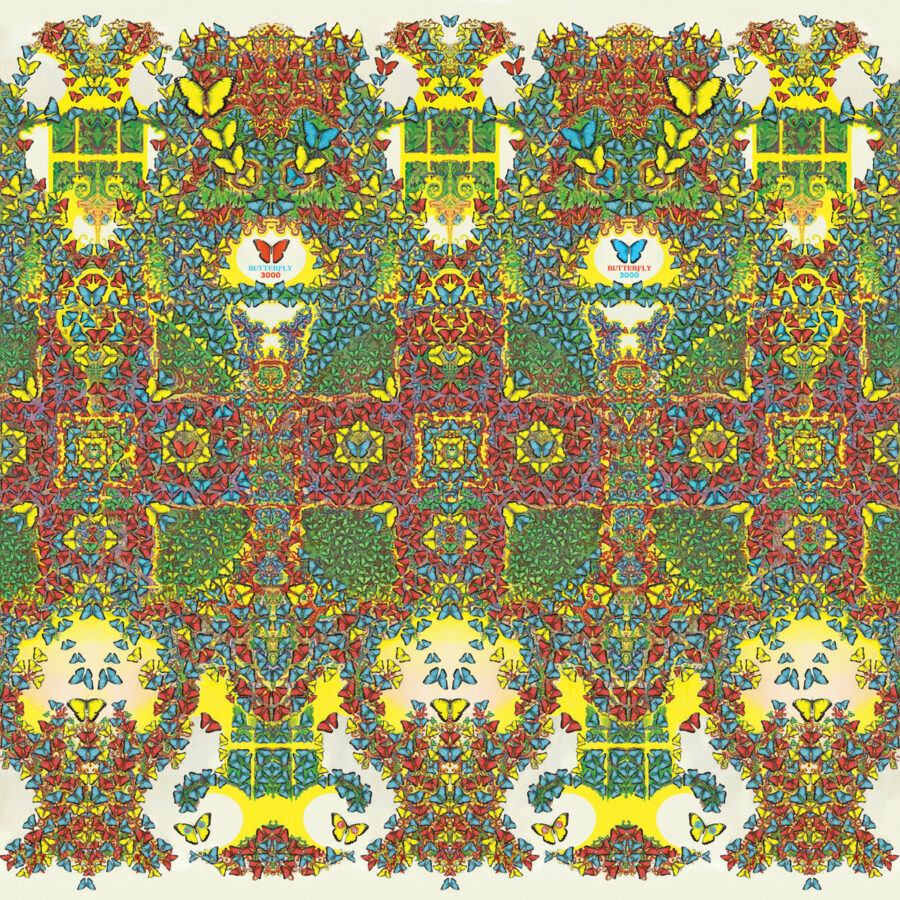King Gizzard’s musical approach has garnered much praise and many fans throughout the past decade. Releasing a whopping eighteen studio albums since 2012, the group is never done creating and experimenting, resulting in an endless discography worthy of thirty years of progress, not just ten. But alongside this never-ending search for every genre-splice possible, some projects can get lost in the weeds. And though Butterfly 3000 isn’t dull or uninteresting, its inability to wield mainly synths leaves arguably King Gizzard’s brightest project to sound like a less refined version of STRFKR’s Reptilians.
Like much of synth-pop, Butterfly 3000 navigates a glittery, warped reality full of lush electronica and Gizzard’s choice of acoustic instrumentation. But somehow, in an album full of mostly synths, the main tool rarely seems like the record’s focus. From the onset, Gizzard use synths to establish each track’s melodic focal point before opting back into the realm of acoustic strings and percussion. Album-opener “Yours” pits the two in a back-and-forth barely halfway through, dueting the starry synths with earthy acoustic guitars. The electronica then quickly fades out for a show of gorgeous strings that usher the back half of the track to its climax. Similarly, “Shanghai’s” roots are found in the juxtaposition between the deep bass chords, airy flutes, and piercing falsetto vocals. Though the trippy synths persist, they’re more of a fun accessory than an engaging base to build upon.
Other tracks, like the piano-rich “Interior People,” feature barely any synths whatsoever. Utilizing them for transitionary moments, their scarce appearances don’t even find themselves alongside the best moments the track has to offer. Instead, echoing pianos steal the spotlight once again.
A lack of synths isn’t a sin by itself, but when the main promise of the record isn’t important, and often doesn’t enrich the rest of it, the record starts to have an identity crisis. And grandiose moments like “Catching Smoke” quickly inform us of what we were robbed of, as well. The multitude of chirping synths float with the group’s falsettos for a very refreshing and summery track. It’s complex, always moving, and always driven by distorted electronica and thunderous bass riffs. The track could probably be trimmed of all its acoustic instrumentation and stand strong, if not even stronger.
Other moments continue to show the potential of Gizzard’s synth usage, with “Ya Love” doing the subtle synth approach correctly. Grounded in some of the bouncy guitar chords of Gizzard’s past, along with some roaring drum rolls, the limited synths add on a liveliness that highlights the group’s echoed “ya love.” They pair well with the background flutes to meld into a bright and flowing entity that enhances the track’s emotion—a large improvement from an afterthought.
While these highlights stand to show King Gizzard do know what they’re doing to an extent, they lessen the forgetful moments even more. “Dreams” is a simple and often repetitive bout of synth-pop with little to show for itself. And though “Blue Morpho” does use a quite effective, haunting, wonky group of synths, I can’t help but feel the ominous feeling could’ve been done even better with rugged guitars and other psychedelic props more familiar to the group.
Either way, the group’s inconsistent investment in and performance with their electronica leaves Butterfly 3000 in a realm between two approaches. Rather than bask in the endless potential of synthetic and acoustic instrumentation as one, the group often defaults to what’s comfortable, placing their efforts on complex acoustic rhythms that are fine by themselves, but neuter the effectiveness of their other tools. The butterfly-filled harmony of the album’s cover art can’t ever come to fruition, because it’s lost in a sonic war that never gets settled.
Advertisement
Advertisement
